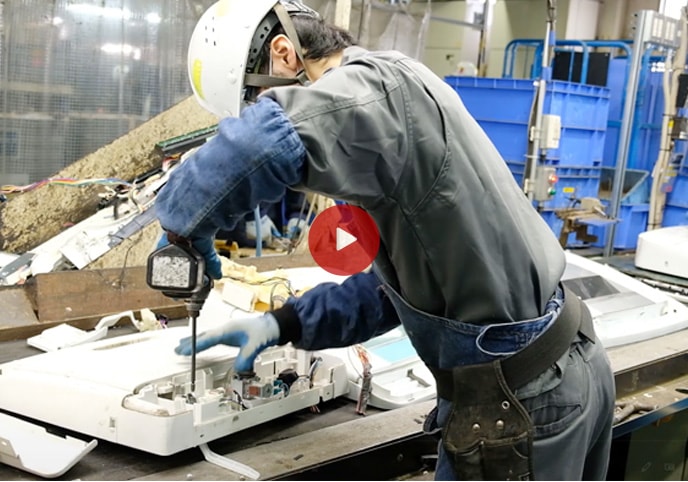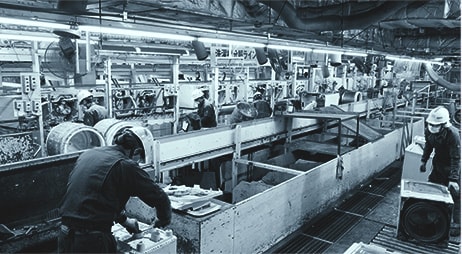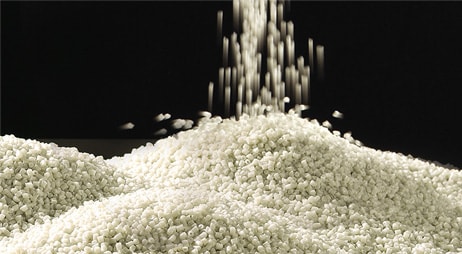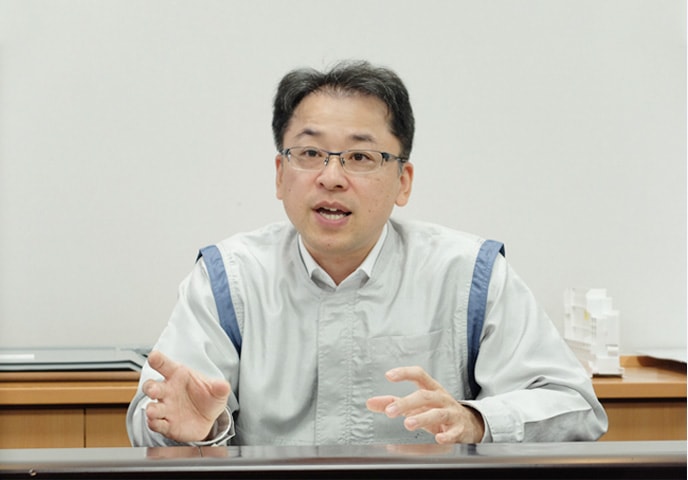
Improving Disassembly and Recovery Technologies to Advance Plastic Waste Recycling
Akihide Toda, Chief Researcher
R&D Division, Smart Appliances & Solutions Business Unit
(Department and job title as of November 22, 2019)
Recovering High-purity Plastic
When making recycled materials from recovered plastic, it’s important to gather single materials and remove foreign matter as much as possible. If foreign matter or other kinds of plastic are mixed in, physical properties and durability suffer, as does the appearance.
When closed-loop material recycling first began, only easy-to-remove parts made of single materials, such as washing machine tubs and refrigerator vegetable cases, were collected. But as disassembly and recovery technologies have developed, it has become possible to recover the majority of plastic parts from used appliances; for example, even parts containing metal elements and compound parts made up of various types of material.
An example is the pulsator (a rotating hub with vanes) in washing machines. Although mostly made of a single material, polypropylene, the pulsator had a metal part at its center that could not be easily removed, and pulsators were disposed of as waste. But thanks to the development of a coring device capable of removing this metal part, the pulsator can now be recovered for its recyclable polypropylene.
A washing machine’s top plate is also made of polypropylene and other materials. It is also composed of parts like substrates, bolts, sponge, and labels. It’s possible to crush such compound parts as they are, and then later separate the different materials and remove foreign matter, but this incurs a high cost. Sharp and Kansai Recycling Systems collaborated to install a plastic separating line on which as many materials are separated and as much foreign matter as possible is removed during the disassembly stage. This has made it possible to recover high-purity plastic.
The work of Kansai Recycling Systems is crucial to our efforts. The company’s skilled workers and advanced mechanization enable meticulous material separation and recycling.
Appliance Recycling at Kansai Recycling Systems

The Home Appliance Recycling Act stipulates the responsibilities of all concerned parties in recycling the four relevant products: collection and delivery by retailers, proper recycling by manufacturers, and a recycling fee paid by consumers. Kansai Recycling Systems is a recycling company founded in 2001 by Sharp, Mitsubishi Materials, and others* in response to the enactment of the Home Appliance Recycling Act.
Kansai Recycling Systems’ head office plant in Hirakata, Osaka Prefecture recycles air conditioners, refrigerators/freezers, and washing machines/dryers. Its No. 2 plant in Iga, Mie Prefecture recycles TVs (CRT and FPD).
- * Sharp Corporation, Mitsubishi Materials Corporation, Hitachi Global Life Solutions, Inc., Mitsubishi Electric Corporation, Sony Corporation, Fujitsu General Ltd.
Recovering High-purity Plastic through a Focus on Pre-processes
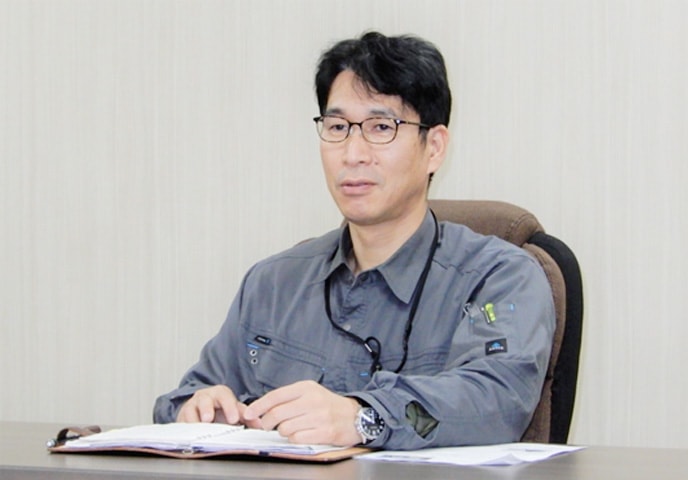
Hideyuki Tanba, President
Kansai Recycling Systems Co., Ltd.
Our plant divides the work into pre-processes (manual disassembly) and post-processes (mechanical processes), but it is the pre-processes that we focus on. By developing devices for removing metal and other foreign materials and by using innovative methods for conveying materials and thus improving work efficiency, we do everything we can to increase the amount of high-purity plastic we recover. We also conduct small-group activities and study sessions that help us come up with efficient recovery methods and solve actual work issues.
We hold design-for-recycling training sessions for Sharp engineers every year. Having engineers actually disassemble products themselves gives them feedback on product design and development that leads to future products that are easier to recycle.

Periodic Study Sessions Lead to Efficient Disassembly
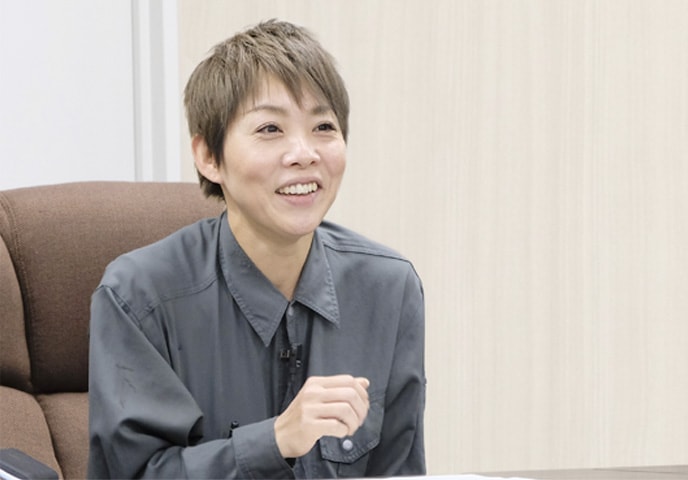
Sayuri Tabata, washing machine line sub-leader
Kansai Recycling Systems Co., Ltd.
Depending on which company made them and when, the washing machines that come to us vary in characteristics such as ease of manual disassembly, the number of bolts, and whether they require mechanical processing. Other factors include front-loading washing machines having more parts than top-loading models, and the top plate of new models having many parts compared to the top plate on older models, which simply had a substrate and few other parts. This is why we hold periodic study sessions to learn about disassembly so that even inexperienced staff can work efficiently. In 2018 we upgraded the recycling line for washing machines to automate conveyance and decrease the burden on workers.
Sorting Materials by Looking, Feeling, and Listening
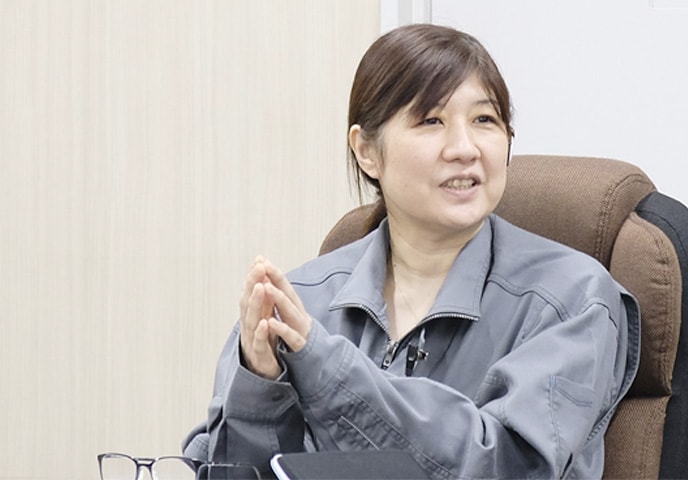
Minako Kadoi, sorting line leader
Kansai Recycling Systems Co., Ltd.
Sorting lines are where staff carry out the separation of plastic and the removal of metal and other foreign materials from the air conditioners, refrigerators, and washing machines that come to us. For example, for the top plate of washing machines, the control panel substrate is taken off and things like its stickers, foil, and wires, as well as grime, are completely removed. And because top plates are often made of polypropylene and other materials, workers decide how to sort materials not just by looking at them but by feeling them and listening to the sound they make when hit. To remove the metal part from the washing machine’s pulsator, coring equipment is used. When workers come across a part made of an unfamiliar material, they contact the manufacturer to find out how to properly separate this material.
-

Washing machine disassembly line
-
VideoSkilled disassembly work
-

Pulsator (the vaned rotating hub of a washing machine)
-
VideoPulsator coring equipment

